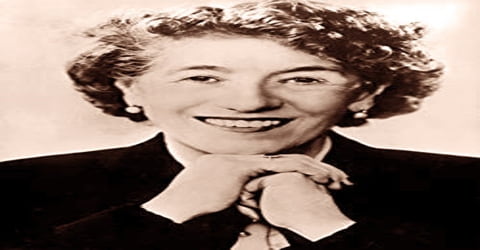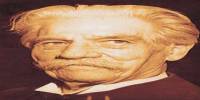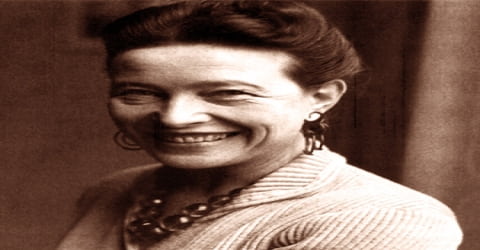Biography of Enid Blyton
Enid Blyton – English children’s writer.
Name: Enid Mary Blyton
Date of Birth: 11 August 1897
Place of Birth: East Dulwich, London, England
Date of Death: 28 November 1968 (aged 71)
Place of Death: Hampstead, London, England
Occupation: Novelist, poet, teacher, short story writer
Father: Thomas Carey Blyton
Mother: Theresa Mary Harrison Blyton
Spouse/Ex: Hugh Alexander Pollock (m. 1924; div. 1942); Kenneth Fraser Darrell Waters (m. 1943; died 1967)
Children: Gillian Baverstock, Imogen Mary Smallwood
Early Life
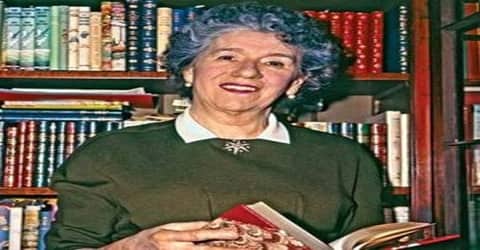
Enid Blyton, in prolific and highly popular British author of stories, poems, plays, and educational books for children, was born on 11th August 1897 in East Dulwich, South London and spent her childhood in Beckenham, Kent, with her two younger brothers, Hanly and Carey. She was an English children’s writer whose books have been among the world’s best-sellers since the 1930s, selling more than 600 million copies. Blyton’s books are still enormously popular, and have been translated into 90 languages; her first book, Child Whispers, a 24-page collection of poems, was published in 1922. She wrote on a wide range of topics including education, natural history, fantasy, mystery, and biblical narratives and is best remembered today for her Noddy, Famous Five, Secret Seven, and Malory Towers series.
She was famous for creating characters like ‘Noddy’ and created many adventurous, fantastical and magical books for little children. Her books are still popular amongst children all over the globe and her work has been translated into 90 languages. She was born in London and brought up in Kent. She had a close relationship with her father who used to inspire her towards art and writing and made her a nature lover but her relationship with her mother was turbulent and she never really came close to her. After her parents’ divorce, Blyton left to be a teacher and a governess and started writing short stories, verses and plays. Some of these were published in small time magazines but her big break came in 1924 when a famous publication called George Newness signed her up. It was here that she met her first husband Hugh Pollock. But her marriage could not survive and she married for the second time to a surgeon called Kenneth Waters.
Following the commercial success of her early novels such as Adventures of the Wishing-Chair (1937) and The Enchanted Wood (1939), Blyton went on to build a literary empire, sometimes producing fifty books a year in addition to her prolific magazine and newspaper contributions. Her writing was unplanned and sprang largely from her unconscious mind; she typed her stories as events unfolded before her. The sheer volume of her work and the speed with which it was produced led to rumors that Blyton employed an army of ghostwriters, a charge she vigorously denied.
She wrote many famous books like: ‘The Enid Blyton Book of Bunnies’, ‘The Enid Blyton Book of Brownies’, ‘London Zoo- The Zoo Book’, etc. Her writings were considered to be immature, unrealistic and therefore not fit for young children by the critics of that time. But that did not stop her books from becoming famous amongst little children. She is considered to be instrumental in inculcating a habit of reading in young children through hundreds of her books.
Her books have been criticized as being elitist, sexist, racist, xenophobic and at odds with the more liberal environment emerging in post-war Britain, but they have continued to be best-sellers since her death in 1968.
Childhood, Family and Educational Life

Enid Blyton, in full Enid Mary Blyton, was born on 11 August 1897 in East Dulwich, South London, the oldest of the three children, to Thomas Carey Blyton (1870–1920), a cutlery salesman, and his wife Theresa Mary (née Harrison; 1874–1950). Enid’s younger brothers, Hanly (1899–1983) and Carey (1902–1976), were born after the family had moved to a semi-detached villa in Beckenham, then a village in Kent. Shortly after her birth, her parents moved to Beckenham in Kent and it was there, in a number of different houses over the years, that Enid Blyton spent her childhood.
She was very close to her father and they both shared a loving relationship. They both had a zest for knowledge and enjoyed nature, art, theatre, music, and literature. Her father taught her many great lessons that she carried with herself throughout her life. She developed a special love for gardening because her father was an ardent lover of nature. But she was not very fond of her mother, though. Her mother was homely and domesticated who did not approve very much of Blyton’s bold expeditions of knowledge along with her father.
Although she adored her father, Enid’s relationship with her mother, Theresa, was more turbulent. Theresa was a tall, raven-haired woman whose life revolved around housework. She was not creative and artistic like Thomas and did not share his interests. She expected her daughter to help with household chores but gave her sons a lot more freedom, which Enid, who was not very domesticated, resented. Stern and house-proud, Theresa did not approve of Enid devoting so much time to nature-walks, reading and other hobbies when there was work to be done in the house. Neither did she understand why her husband encouraged their daughter in such activities.
From 1907 to 1915 Blyton attended St Christopher’s School in Beckenham, where she enjoyed physical activities and became school tennis champion and captain of lacrosse. She was not so keen on all the academic subjects but excelled in writing, and in 1911 she entered Arthur Mee’s children’s poetry competition. Mee offered to print her verses, encouraging her to produce more. Blyton’s mother considered her efforts at writing to be a “waste of time and money”, but she was encouraged to persevere by Mabel Attenborough, the aunt of school friend Mary Potter.
Blyton, the daughter of a businessman, abandoned her early studies in music to train as a schoolteacher at the Ipswich High School (1916–18). Her first publication was a poem that appeared in a children’s magazine when she was only 14, and in 1917 another of her poems was published in Nash’s Magazine.
In September 1916, Enid turned down her place at the Guildhall School of Music and enrolled herself on a Froebel-based teacher-training course at Ipswich High School. She completed her teacher training in December 1918 and went on to teach at a boys’ preparatory school in Kent before becoming a governess to four brothers in Surbiton, Surrey.
Blyton’s father died of a heart attack in 1920. She was told that he died while fishing on the Thames but the truth was he died of a stroke while sitting in an armchair at his home in Sunbury, Florence. The truth about her father’s death was not revealed to the public as her mother had kept the breakdown of their marriage a secret otherwise it would have caused them great dishonor.
Personal Life
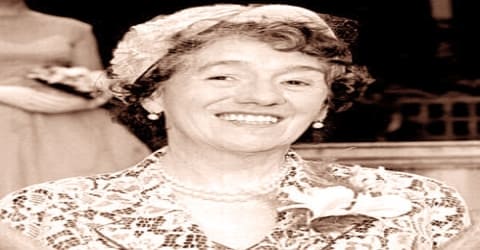
On 28th August 1924, Enid Blyton married Hugh Alexander Pollock, who was editor of the book department for the publishing firm George Newnes. They got married quietly at the Bromley Register Office, where no one from Blyton or Hugh’s family was invited. They lived together first in Chelsea and then moved together to Elfin Cottage in Beckenham in 1926. The two of them had met when Enid was commissioned by Newnes to write a children’s book about London Zoo – The Zoo Book (1924.) Hugh had been born and brought up in Ayr and had joined the Royal Scots Fusiliers at the beginning of the First World War, being awarded the D.S.O. (Distinguished Service Order) in 1919. His first marriage had ended when his wife had an affair, and he had to obtain a divorce in order to marry Enid.
In 1942, Hugh and Blyton got divorced. Hugh was having an affair with the famous novelist Ida Crowe and Blyton had also met a surgeon called Kenneth Fraser Darraell Waters by this time. They got married in 1943 at the City of Westminster Register Office. In 1945, she had another miscarriage after falling from a ladder, which shattered her and her new husband.
Her autobiography, The Story of My Life (1952), contains photographs of her “happy little family” herself, her second husband Kenneth, Gillian and Imogen. There is no mention of Hugh and, although it is not explicitly stated, readers are given the impression that Kenneth is the girls’ father.
Career and Works

In the early 1920s, Enid Blyton began to achieve success with her writing her first book, Child Whispers, a slim volume of poetry, was published in 1922. Through the 1920s and 1930s, more of Enid’s books were published, including a number of educational books.
In 1916, Blyton’s first poem ‘Have you?’ was published in Nash’s Magazine. This was the first documented published work of hers. She finished her teacher-training course in 1918 and taught at a boy’s preparatory school called Bickley Park School in Kent. After a year’s time, she became a governess to four boys at Southernhay house in Surbiton, Surrey. She started an experimental school in there and a lot of children from the neighborhood used to come to learn from her. She was there for 4 years.
Blyton proved to be an inventive, energetic teacher and, after completing her training in December 1918, she taught for a year at a boys’ preparatory school, Bickley Park School in Kent. Next, she became governess to the four Thompson brothers, relatives of Mabel Attenborough, at a house called Southernhay in Surbiton, Surrey. She remained there for four years and, during that time, a number of children from neighboring families also came to join her “experimental school,” as she called it. The accounts of lessons at “Miss Brown’s School” in Enid Blyton’s Book of the Year (1941) surely owe something to her years as a teacher at her own little school in Surbiton, which she later said was “one of the happiest times of my life.”
In July 1923 Blyton published Real Fairies, a collection of thirty-three poems written especially for the book with the exception of “Pretending”, which had appeared earlier in Punch magazine. The following year she published The Enid Blyton Book of Fairies, illustrated by Horace J. Knowles, and in 1926 the Book of Brownies. Several books of plays appeared in 1927, including A Book of Little Plays and The Play’s the Thing with the illustrator Alfred Bestall.
In 1924, Blyton was signed up by the publishing company called George Newnes and her ‘London Zoo – The Zoo Book’ came out. This was the time when she met her first husband Hugh Alexander Pollock, who was the editor of the publishing company then.
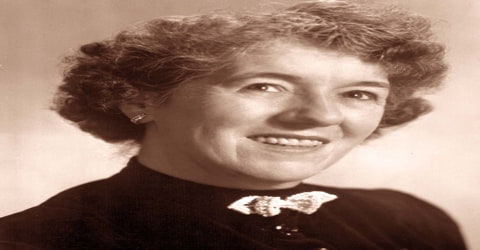
Blyton’s first full-length novel, The Enid Blyton Book of Bunnies, was published in 1925. The following year Enid began writing and editing a magazine, which went onto becoming the popular weekly magazine, Sunny Stories.
In 1926, Blyton started editing and contributing to a fortnightly magazine called ‘Sunny Stories for Little Folks’. The same magazine became a weekly in 1937 and it was renamed as ‘Enid Blyton’s Sunny Stories’ and then finally renamed as ‘Sunny Stories’. In 1926, ‘The Enid Blyton Book of Brownies’ came out and is generally considered her first proper novella.
In 1929 Enid and Hugh moved to Buckinghamshire where their two daughters, Gillian and Imogen, were born. In 1938, Enid moved the family to Green Hedges in Beaconsfield. Now a full-time writer, she relied increasingly on domestic staff to help run the household.
In 1927, Blyton published ‘The Wonderful Adventure’ which was her first adventure novella but her full-length novel on an adventure was published in 1938 by the title of ‘The Secret Island’.
In the 1930s Blyton developed an interest in writing stories related to various myths, including those of ancient Greece and Rome; The Knights of the Round Table, Tales of Ancient Greece and Tales of Robin Hood were published in 1930. In Tales of Ancient, Greece Blyton retold sixteen well-known ancient Greek myths but used the Latin rather than the Greek names of deities and invented conversations between the characters. The Adventures of Odysseus, Tales of the Ancient Greeks and Persians and Tales of the Romans followed in 1934.
Enid Blyton’s first full-length adventure novel, ‘The Secret Island’, was published in 1938. Described by The Glasgow Herald as a “Robinson Crusoe-style adventure on an island in an English lake”, The Secret Island was a lifelong favorite of Gillian’s and spawned the Secret series. The following year Blyton released her first book in the Circus series and her initial book in the Amelia Jane series, Naughty Amelia Jane! According to Gillian, the main character was based on a large handmade doll given to her by her mother on her third birthday.
The first of twenty-eight books in Blyton’s Old Thatch series, The Talking Teapot and Other Tales, was published in 1934, the same year as the first book in her Brer Rabbit series, Brer Rabbit Retold; her first serial story and a first full-length book, Adventures of the Wishing-Chair, followed in 1937. The Enchanted Wood, the first book in the Faraway Tree series, published in 1939, is about a magic tree inspired by the Norse mythology that had fascinated Blyton as a child. According to Blyton’s daughter Gillian, the inspiration for the magic tree came from “thinking up a story one day and suddenly she was walking in the enchanted wood and found the tree. In her imagination, she climbed up through the branches and met Moon-Face, Silky, the Saucepan Man and the rest of the characters. She had all she needed.” As in the Wishing-Chair series, these fantasy books typically involve children being transported into a magical world in which they meet fairies, goblins, elves, pixies, and other mythological creatures.
In the 1940s, Enid Blyton wrote prolifically and apart from several other books, she came up with her ‘Famous Five’ series. Its popularity resulted in twenty-one books between then and 1963, and the characters of Julian, Dick, Anne, George (Georgina) and Timmy the dog became household names in Britain. Matthew Grenby, an author of Children’s Literature, states that the five were involved with “unmasking hardened villains and solving serious crimes”, although the novels were “hardly ‘hard-boiled’ thrillers”. Blyton based the character of Georgina, a tomboy she described as “short-haired, freckled, sturdy, and snub-nosed” and “bold and daring, hot-tempered and loyal”, on herself.
In 1940 Blyton published two books – Three Boys and a Circus and Children of Kidillin – under the pseudonym of Mary Pollock (middle name plus first married name), in addition to the eleven published under her own name that year. So popular were Pollock’s books that one reviewer was prompted to observe that “Enid Blyton had better look to her laurels”. But Blyton’s readers were not so easily deceived and many complained about the subterfuge to her and her publisher, with the result that all six books published under the name of Mary Pollock two in 1940 and four in 1943 were reissued under Blyton’s name. Later in 1940 Blyton published the first of her boarding school story books and the first novel in the Naughtiest Girl series, The Naughtiest Girl in the School, which followed the exploits of the mischievous schoolgirl Elizabeth Allen at the fictional Whyteleafe School. The first of her six novels in the St. Clare’s series, The Twins at St. Clare’s, appeared the following year, featuring the twin sisters Patricia and Isabel O’Sullivan.
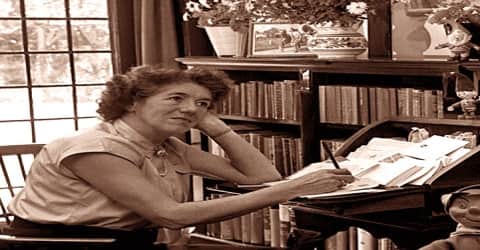
Most of Blyton’s fiction consists of mystery or adventure stories, though schools and circuses form the settings of others. Her Famous Five, Secret Seven, and Mystery series of books were widely read, and in the 1950s her Little Noddy series, featuring the adventures of Little Noddy, Mr. Plod the policeman, Big Ears, and other characters of Toyland Village, enjoyed enormous popularity and made her a household name. Blyton’s books feature clearly delineated good and bad characters and have exciting plots that illustrate traditional moral lessons. Her vocabulary and prose style are simple and highly accessible to beginning readers.
In 1950, her book ‘The Pole Star and The Ship of Adventure’ was published and it contained the experiences from the time when she went on a cruise to Madeira and the Canary Islands with her first husband.
In 1951, ‘The Queen Elizabeth Family’ was published, a book on the experiences when she went on a short holiday with her second husband Kenneth to New York, sailing out on the Queen Elizabeth and coming back on the Queen Mary.
Her autobiography, The Story of My Life (1952), contains photographs of her “happy little family” herself, her second husband Kenneth, Gillian and Imogen. There is no mention of Hugh and, although it is not explicitly stated, readers are given the impression that Kenneth is the girls’ father.
By 1955 Blyton had written her fourteenth Famous Five novel, Five Have Plenty of Fun, her fifteenth Mary Mouse book, Mary Mouse in Nursery Rhyme Land, her eighth book in the Adventure series, The River of Adventure, and her seventh Secret Seven novel, Secret Seven Win Through. She completed the sixth and final book of the Malory Towers series, Last Term at Malory Towers, in 1951.
In 1952 Enid relinquished Sunny Stories after twenty-six years, launching her fortnightly Enid Blyton’s Magazine in March 1953. She wrote all the contents herself except for the advertisements, using the magazine to mould her readership through her stories, editorials and news-pages, encouraging her child readers to be kind, helpful and responsible and impressing upon them that, if they used their initiative, they could do their bit and make a difference in society, whatever their age. Her Magazine folded in September 1959 as Enid wished to spend more time with Kenneth, who had retired from his work as a surgeon in 1957. By that time the four clubs had approximately 500,000 members between them and had raised about £35,000 in six years an enormous amount of money in those days.
Altogether, Enid Blyton is believed to have written around 700 books (including collections of short stories) as well as magazines, articles, and poems. She wrote an incredible variety of books for children aged about two to fourteen adventure and mystery stories, school stories, circus and farm books, fantasy tales, fairy-tales, family stories, nursery stories, nature books, religious books, animal stories, poetry, plays and songs, as well as re-telling myths, legends and other traditional tales. She earned a fortune from her writing and in 1950 she set up her own limited company, Darrell Waters Ltd., to manage the financial side of things.
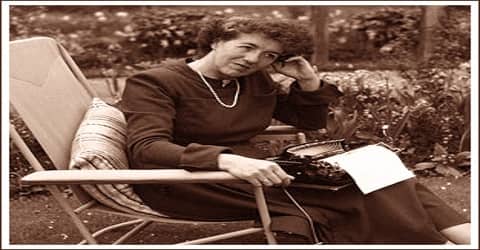
Blyton published several further books featuring the character of Scamp the terrier, following on from The Adventures of Scamp, a novel she had released in 1943 under the pseudonym of Mary Pollock. Scamp Goes on Holiday (1952) and Scamp and Bimbo, Scamp at School, Scamp and Caroline and Scamp Goes to the Zoo (1954) were illustrated by Pierre Probst. She introduced the character of Bom, a stylish toy drummer dressed in a bright red coat and helmet, alongside Noddy in TV Comic in July 1956. A book series began the same year with Bom the Little Toy Drummer, featuring illustrations by R. Paul-Hoye, and followed with Bom and His Magic Drumstick (1957), Bom Goes Adventuring and Bom Goes to Ho Ho Village (1958), Bom and the Clown and Bom and the Rainbow (1959) and Bom Goes to Magic Town (1960). In 1958 she produced two annuals featuring the character, the first of which included twenty short stories, poems and picture strips.
In 1960, Blyton wrote ‘Five on Finniston Farm’, which got its inspiration from Blyton and Kenneth’s golf course and farm in Dorset. In 1962, ‘Five Have a Mystery to Solve’ was published. Her last two books (excluding reprints of earlier material) were re-tellings of Bible stories, The Man Who Stopped to Help and The Boy Who Came Back, both published in August 1965.
Blyton came under some criticism for her stereotyped characters and simplistic viewpoint, but her remarkable popularity with young readers has remained undiminished, and new editions of her books continue to appear. By the early 21st century her books had sold some 400 million copies and been translated into at least 90 languages.
Awards and Honor

(Blue plaque on Blyton’s childhood home in Ondine Street, East Dulwich)
Enid Blyton remains one of the world’s best-selling children’s authors. Sales of her books are in excess of 500 million copies, and they have been translated into over 40 languages.
As well as being regularly voted the UK’s best-loved author, according to UNESCO, Enid Blyton is the most translated children’s author in the world.
In 2009, BBC film made a movie on Blyton’s life. The role of Enid was performed by the famous British actress Helena Bonham Carter.
Death and Legacy
By the end of the 1950s, Blyton’s health became a cause for major concern. She started to feel breathless and suffered from a mild heart attack during this time. In the 1960s it was discovered that she was suffering from dementia.
She died at the Greenways Nursing Home, Hampstead, North London, on 28 November 1968, aged 71. A memorial service was held at St James’s Church, Piccadilly, and she was cremated at Golders Green Crematorium, where her ashes remain. Blyton’s home, Green Hedges, was auctioned on 26 May 1971 and demolished in 1973; the site is now occupied by houses and a street named Blyton Close. An English Heritage blue plaque commemorates Blyton at Hook Road in Chessington, where she lived from 1920 to 1924.
In 2014 a plaque recording her time as a Beaconsfield resident from 1938 until her death in 1968 was unveiled in the town hall gardens, next to small iron figures of Noddy and Big Ears.
Blyton devoted herself full-time to writing from about 1924. From then until about 1965, she wrote more than 600 children’s books and wrote innumerable articles for magazines. Some of her stories first appeared in Enid Blyton’s Sunny Stories (1937–52) and other magazines she founded and edited over the years.
Several decades after her death, Enid Blyton is not forgotten. The best of her lives on in her books, many of which are still in print, and she continues to entertain, educate and inspire children around the globe through the words she wrote. She encourages her readers to look afresh at the world around them to observe, explore, investigate, discover and learn. Long may that continue! To quote a few apt lines from Enid Blyton’s “The Poet,” published in The Poetry Review in 1919:
“Dear heart
And soul of a child,
Sing on!”
In 2009, in honor of the 60th birthday of Blyton’s Noddy character in Noddy Goes to Toyland, Blyton’s granddaughter Sophie Smallwood published a new Noddy book, Noddy and the Farmyard Muddle, with illustrations by Blyton’s own illustrator, Robert Tyndall.
Information Source:
